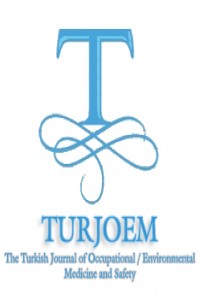Öz
Kaynakça
- Anadolu University, Faculty of Science, Department of Biology
Öz
Silicon dioxide as a termed Silica is
chemically colorless to white and insoluble in water. Silica has widespread
industrial applications including use as a food additive, anti-foaming agent,
and excipient in drugs and vitamins. Crystalline silica is an important
industrial material that occurs in several forms are used a wide variety of
industrial settings, including construction, mining, manufacturing, maritime,
and agriculture. Occupational exposure to
crystalline silica can lead to the development of disabling and sometimes fatal
lung diseases, including silicosis and lung cancer.
In this study
clastogenic effects of Silica (SiO2) were investigated after 24 and
48 hours treatment with cultured human lymphocytes at doses of 1000, 500, 250
ve 125 µg/ml by using Cytokinesis Block Micronucleus (CBMN), Sister Chromatid
Exchange (SCE) and Chromosome Aberration (CA) methods.
The results indicate that Silica
caused a cytotoxic and
cytostatic effect in human lymphocytes at a concentration 1000, 500 ve
250 µg/ml due to decreased
Replicaton Index (RI) and Cell Proliferation Index (CPI). Together with
these findings, statistical increase in the percentage the cells with micronucleus formations (MN),
chromosome aberrations (CA) and frequency of Sister Chromatid Exchanges (SCE) were observed at the lowest
concentration (125
µg/ml) of Silica.
In conclusion,
it can be assumed that the higher concentrations of Silica have significant
cytotoxic activity while it has shown considerable cytogenetic in other words
clastogenic effects only at lowest dose for human peripheral lymphocytes in vitro.
Anahtar Kelimeler
CYTOGENETIC EFFECTS OF SILICON DIOXIDE ON HUMAN PERIPHERAL BLOOD LYMPHOCYTES IN VITRO
Kaynakça
- Anadolu University, Faculty of Science, Department of Biology
Ayrıntılar
| Bölüm | Articles |
|---|---|
| Yazarlar | |
| Yayımlanma Tarihi | 16 Şubat 2017 |
| Yayımlandığı Sayı | Yıl 2017 Cilt: Volume 2 Sayı: İssue 1 (1) - 2.İnternational Congress Of Forensic Toxicology |

